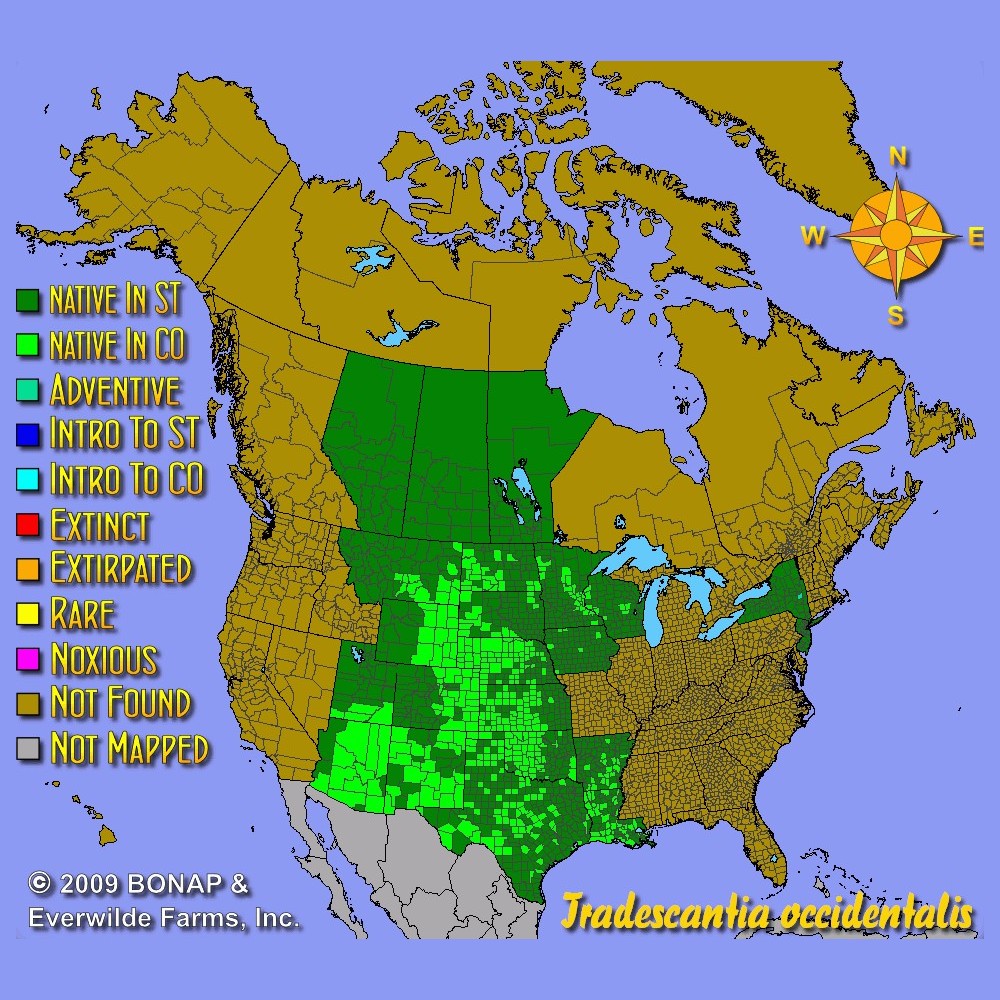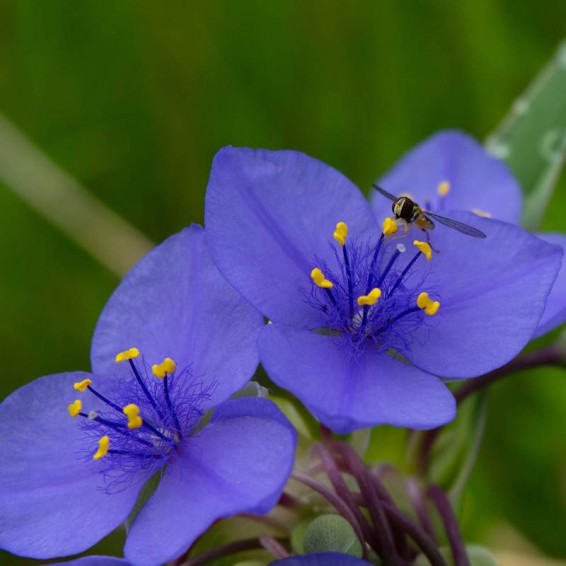Western Spiderwort Seeds
- HOW TO GROW
- FAST FACTS
- REVIEWS
HOW TO GROW
Sowing: Direct sow in late fall, planting just below the surface of the soil. For spring planting, mix the Tradescantia Occidentalis seeds with moist sand and store in the refrigerator for 4 months before planting. Keep the soil lightly moist until germination.
Growing: Water seedlings occasionally until they become established. Control weeds, since this plant does not like competition. Mature plants tolerate drought and poor soil, in addition to growing well in shallow, rocky soil and sand. This plant may self-seed and spread slowly by rhizomes, and attracts bees. Mature plants can be divided.
Harvesting: These blossoms do not perform well as cut flowers, and are best enjoyed outdoors.
Seed Saving: After the purple Spiderwort flowers fade, the rounded seed pods will begin to form. Since they soon split open and drop their seed, gather the pods as soon as they begin to turn from green to yellow; the mature Western Spiderwort seeds will be a gray color. Spread the pods out to dry away from direct sunlight. Crush the dried pods slightly to release the seed, then separate the seed from the plant material. Store the cleaned Tradescantia Occidentalis seed in a cool, dry place.
FAST FACTS
Common Names: Western Spiderwort
Latin Name: Tradescantia occidentalis
Species Origin: US Native Wildflower
Type: Native Wildflowers
Life Cycle: Perennial
USDA Zones: 4, 5, 6, 7, 8, 9, 10
US Regions: Mountain, Arid/Desert, Plains/Texas, Midwest, Southeast
Seeds per Ounce: 9,900
Stratification: Cold/Wet for 16 Weeks
Germination Ease: Stratify 16 Weeks
Sunlight: Full Sun
Height: 20 Inches
Color: Blue, Purple
Bloom Season: Blooms Late Spring, Blooms Early Summer
Uses: Attracts Pollinators, Attracts Honeybees, Cut Flowers
western spiderwort
fast shipping
Great little flower
These grow naturally in NM, but I wanted to plant more in some half shady spots and in the back where the deer can't eat them. Very pretty stalks--nice greenery and happy little flowers. I planted in the winter to get cold hours in
such a pretty pop of colors!
These will be an amazing addition to our wildflower garden, something low for the kiddos to smell
DESCRIPTION

HOW TO GROW
Sowing: Direct sow in late fall, planting just below the surface of the soil. For spring planting, mix the Tradescantia Occidentalis seeds with moist sand and store in the refrigerator for 4 months before planting. Keep the soil lightly moist until germination.
Growing: Water seedlings occasionally until they become established. Control weeds, since this plant does not like competition. Mature plants tolerate drought and poor soil, in addition to growing well in shallow, rocky soil and sand. This plant may self-seed and spread slowly by rhizomes, and attracts bees. Mature plants can be divided.
Harvesting: These blossoms do not perform well as cut flowers, and are best enjoyed outdoors.
Seed Saving: After the purple Spiderwort flowers fade, the rounded seed pods will begin to form. Since they soon split open and drop their seed, gather the pods as soon as they begin to turn from green to yellow; the mature Western Spiderwort seeds will be a gray color. Spread the pods out to dry away from direct sunlight. Crush the dried pods slightly to release the seed, then separate the seed from the plant material. Store the cleaned Tradescantia Occidentalis seed in a cool, dry place.
FAST FACTS
Common Names: Western Spiderwort
Latin Name: Tradescantia occidentalis
Species Origin: US Native Wildflower
Type: Native Wildflowers
Life Cycle: Perennial
USDA Zones: 4, 5, 6, 7, 8, 9, 10
US Regions: Mountain, Arid/Desert, Plains/Texas, Midwest, Southeast
Seeds per Ounce: 9,900
Stratification: Cold/Wet for 16 Weeks
Germination Ease: Stratify 16 Weeks
Sunlight: Full Sun
Height: 20 Inches
Color: Blue, Purple
Bloom Season: Blooms Late Spring, Blooms Early Summer
Uses: Attracts Pollinators, Attracts Honeybees, Cut Flowers
Reviews
Review
western spiderwort
fast shipping
Review
Great little flower
These grow naturally in NM, but I wanted to plant more in some half shady spots and in the back where the deer can't eat them. Very pretty stalks--nice greenery and happy little flowers. I planted in the winter to get cold hours in
Review
such a pretty pop of colors!
These will be an amazing addition to our wildflower garden, something low for the kiddos to smell






